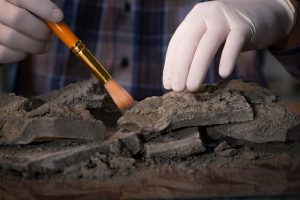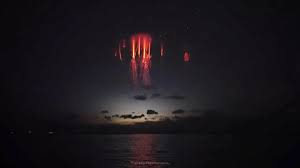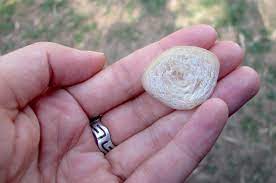Today’s Current Affairs: 13th Dec 2023 for UPSC IAS exams, State PSC exams, SSC CGL, State SSC, RRB, Railways, Banking Exam & IBPS, etc
Table of Contents
Halley’s Comet : Reached The Farthest Point From The Sun

Comet Halley reached the farthest point from the sun recently.
- The comet will reached the farthest point from the sun on December 9, 2023.
- It’ll come closest to the sun again on July 28, 2061.
- Comet Halley is the most famous of all comets.
- A comet is icy and when it comes near the sun it warms and starts releasing gases filled inside it: this is outgassing which creates a tail in a comet.
- A Halley’s comet consists of water and many gases e.g. methane, ammonia, carbon dioxide etc etc.
- As it’s an icy cool rocked structure and its path is also elliptical so as soon as it reaches the soon gases and ice inside it expands and develop into a tail which later appears like a beautiful shooting star from the observation point or from earth.
- The comet is officially called 1P/Halley.
- It was the first comet ever predicted to return.
- It is named after English astronomer Edmond Halley, who examined reports of a comet approaching Earth in 1531, 1607 and 1682.
- He concluded that these three comets were actually the same comet returning over and over again, and predicted that it would return in 1758.
- This comet has been heading away from the sun since its last closest approach in 1986.
- Now it’s reaching the end of its outward journey, due to arrive at its farthest point from our sun on December 9, 2023.
- Helley’s is also known as the short-period comet as its orbit is lasting 200 years or less.
Kavach System : Data

As per a recent government release, the Kavach system, has so far been deployed on 1465 route km and 139 locomotives on South Central Railway sections.
- The sections include Lingamapalli – Vikarabad – Wadi and Vikarabad – Bidar section (265 Rkm), Manmad-Mudkhed-Dhone-Guntkal section (959Rkm) and Bidar-Parbhsection (241Rkm).
- KAVACH is an Automatic Train Protection (ATP) electronic system designed to help the Indian Railways achieve Zero Accidents.
- Objective is to achieve safety in train operations across Indian Railways.
- It has been indigenously developed.
- It was developed by the Research Design and Standards Organisation (RDSO) in collaboration with the Indian industry.
- Research Design and Standards Organisation (RDSO) is a research and development organisation under the Ministry of Railways.
- It has a set of electronic devices and Radio Frequency Identification (RFID) devices installed in locomotives, in the signalling system as well as the tracks.
- These connect to each other using ultra-high radio frequencies to control the brakes of trains.
- It also alerts drivers, all based on the logic programmed into them.
- It is a Safety Integrity Level 4 (SIL-4) certified technology.
- Safety Integrity Level (SIL) comes from two voluntary standards used by plant owners/operators to quantify safety performance requirements for hazardous operations.
- There are four SIL Levels (1-4).
- A higher SIL Level means a greater process hazard and a higher level of protection.
- KAVACH will be the world’s cheapest automatic train collision protection system.
- First successful trial was between Gullaguda–Chitgidda Railway stations of South Central Railway in 2022.
Operation Storm Makers II:

Interpol’s “Operation Storm Makers II” has exposed a growing trend where human trafficking victims are forced to commit cyber fraud.
- The operation, involving Indian enforcement agencies, led to the arrest of 281 individuals across different countries on charges including human trafficking, passport forgery, corruption, telecommunications fraud, and sexual exploitation.
- The trend of trafficking victims being coerced into cyber fraud was first highlighted by Interpol in June, revealing a global issue with billions of dollars in annual revenue generated by scam syndicates.
- The operation targeted human trafficking and cyber scams, it resulted in: Rescue of 149 human trafficking victims
Hundreds of arrests, More than 270,000 inspections and police checks
Project ARTHA Ganga:

Arth Ganga is an initiative added to the Namami Ganga Program launched by the Government in 2014.
- It is a sustainable and viable economic development model to strengthen the river-people connection through an economic bridge.
- It was decided that the Namami Gange mission should lead the concept of Arth Ganga with the involvement of all stakeholders.
- It was added as a vertical of the Namami Ganga Program, in addition to 4 verticals: Nirmal Ganga, Aviral Ganga, Jan Ganga and Gyan Ganga.
Chandrayaan-3 : Propulsion Module Returns To Earth’s Orbit

Scientists successfully brought the Propulsion Module (PM) of the Chandrayaan-3 mission, which brought the Vikram lander within 100 km of the Moon’s surface before detaching.
- This historic event involved a controlled descent to the lunar surface and a successful return to Earth orbit.
- India has launched a total of three Chandrayaan Missions i.e., Chandrayan-1, Chandrayaan-2 and Chandrayan-3.
- Chandrayaan-3 was India’s third lunar mission and second attempt at achieving a soft landing on the moon’s surface.
- Launched on July 14, 2023.
- Objectives:
- To demonstrate Safe and Soft Landing on Lunar Surface
- To demonstrate Rover roving on the moon
- To conduct In-situ scientific experiments.
- It consists of an indigenous Lander module (LM), Propulsion module (PM) and a Rover with an objective of developing and demonstrating new technologies required for Interplanetary missions.
Radiocarbon Dating:

Archaeologists have recently used radiocarbon dating to analyse the oldest true wooden frame saddle in East Asia, revealing how the rise of Mongolian steppe cultures was likely aided by advances in equestrian technology.
- Radiocarbon dating, or carbon-14 dating, is a scientific method that can accurately determine the age of organic materials as old as approximately 60,000 years.
- First developed in the late 1940s at the University of Chicago by Willard Libby, the technique is based on the decay of the carbon-14 isotope
- Carbon-14 is a radioactive isotope of carbon.
- It has been used for historical studies and atmospheric science.
- It can be used on any object that used to be alive.
- That includes pieces of animals, people, and plants, but also paper that was made from reeds, leather made from animal hides, logs that were used to build houses, and so forth.
- Carbon 14 is continually being formed in the upper atmosphere by the effect of cosmic ray neutrons on nitrogen 14 atoms. It is rapidly oxidized in air to form carbon dioxide and enters the global carbon cycle.
- Plants and animals assimilate carbon 14from carbon dioxide throughout their lifetimes into their tissues.
- When they die, the carbon-14 starts to change into other atoms over time.
- Scientists can estimate how long the organism has been dead by counting the remaining carbon-14 atoms.
- Carbon-14 has a half-life of about 5,730 years.
- That means half the atoms in a sample will change into other atoms, a process known as “decay,” in that amount of time.
Exchange-Traded Funds:

The total investment by the Employees’ Provident Fund Organisation (EPFO) in exchange-traded funds (ETFs) in more than seven years has crossed Rs 2.5 trillion, Minister of State in the Labour Ministry recently told Lok Sabha
- An ETF is a collection of marketable securities that tracks an index, a commodity, bonds, or a basket of assets.
- In simple terms, ETFs are funds that track indexes such as CNX Nifty, or BSE Sensex, etc.
- An ETF can be structured to track anything from the price of an individual commodity to a large and diverse collection of securities. ETFs can even be structured to track specific investment strategies.
- ETF funds are somewhat similar to mutual funds in terms of their structure, regulation, and management.
- Just like mutual funds, they are a pooled investment vehicle that offers diversified investment into various asset classes like stocks, commodities, bonds, currencies, options, or a blend of these.
- Unlike mutual funds, ETFs can be purchased or sold on a stock exchange in the same way that regular stocks can.
- The traded price of an ETF changes throughout the day like any other stock, as it is bought and sold on the stock exchange.
- The trading value of an ETF is based on the net asset value of the underlying stocks that it represents.
- ETFs typically have higher daily liquidity and lower fees than mutual fund schemes, making them an attractive alternative for individual investors.
Indian Mouse Deer And Chousingha:

As part of an animal exchange programme recently executed by the Indira Gandhi Zoological Park (IGZP) with Kakatiya Zoological Park in Warangal, IGZP has received two new species, Mouse Deer and Chousingha.
- The Indian Mouse Deer or Spotted Chevrotain is the smallest deer in India and is highly nocturnal.
- Scientific Name: Moschiola indica
- It is endemic to the Indian Subcontinent.
- It is mainly found in peninsular India, with some old records from Nepal.
- Sri Lanka has a separate species called the spotted chevrotain (Moschiola meminna).
- Within India, it is commonly encountered in a number of forest areas along the Western Ghats, in the Eastern Ghats up to Orissa, and in the forests of central India.
- It is small, 25-30 cm at shoulder height, and weighs from two to four kg.
- The fur colour of the Indian spotted chevrotain is dark brown with white underparts.
- There are four or five light rows of white spots on the back. Males of this species have tusk-like upper canines.
- A unique feature of this group is that instead of a four-chambered stomach like in other ruminants, they have a three-chambered stomach.
- It forages on the forest floor for fruits, roots, leaves, and herbs.
- It has occasionally been observed eating insects, crustaceans, and even small mammals.
- Conservation Status: IUCN: Least Concern
Red Sprite:

The European Space Agency (ESA) astronaut photographed an uncommon occurrence termed a red sprite.
- Red sprite represents an extraordinary meteorological phenomenon categorized as a Transient Luminous Event (TLE).
- Sprite is also an acronym for Stratospheric/mesospheric Perturbations resulting from Intense Thunderstorm Electrification.
- Occasionally dubbed red lightning, it occurs above thunderclouds at altitudes between 40 and 80 kilometres (25 – 50 miles) above the Earth’s surface.
- Lightning flashes normally go downward from the clouds to the ground.
- A sprite goes in the other direction, going into the atmosphere, a bit like backwards lightning.
- It happens incredibly quickly in about a millisecond which can make it tricky for scientists to capture and observe them.
- Also, as the red sprites form above thunder clouds, they are not easily studied from Earth and are mostly seen from space.
Otolith Rings:

Marine biologists at the University of Southampton have developed a technique to decode the chemistry of otoliths.
- Otolith rings is a stony lump in the fish ear.
- These are much like tree rings which reveal fish’s age.
- Different forms or isotopes of oxygen in the otolith indicate the temperature the fish experienced when it was alive.
- Carbon isotopes reveal how quickly food was converted into energy.
- Fish carry their fitness trackers in their ears. They are commonly known as “earstones,” are hard, calcium carbonate structures located directly behind the brain of bony fishes.
- There are three types of otoliths, all of which aid fish in balance and hearing:
- Sagitta: The largest of the 3 pairs of otoliths, sagitta is involved in the detection of sound and the process of hearing, or converting sound waves into electrical signals.
- Asteriscus: This type of otolith is involved in the detection of sound and the process of hearing.
- Lapillus: This type of otolith is involved in the detection of gravitational force and sound.
- Different species have otoliths of different shapes and sizes; and cartilaginous fishes, such as sharks, skates, and rays, have none.




